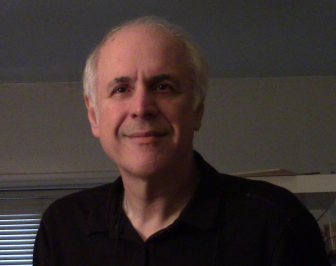
Ann in the uk/Shutterstock
.
Racial and class bias are child welfare’s original sins. So it’s no wonder so many in the field are desperate to whitewash child welfare’s origin story. Now, an article in Children’s Bureau Express, a publication from the Administration for Children and Families, finishes the job of setting the record straight. In the process, it turns child welfare’s creation myth upside down. It’s been a long time coming.
The mountain of myth is built upon a molehill of truth about Mary Ellen Wilson, a little girl who lived in New York City in 1874. She was brutally beaten by the woman she called “Mamma.”
The first myth propounded by America’s “child savers,” as they proudly called themselves in the 19th century, is that saving Mary Ellen required the Society for the Prevention of Cruelty to Animals to intervene and seek protection for her as an animal.
In my book, “Wounded Innocents,” I wrote:
“Child savers point to the case of Mary Ellen as a prime example of what life for children would be like without them. The case teaches us, they say, that parents cannot be allowed to control their children like property and that massive intervention is essential to protect ‘children’s rights.’”

Richard Wexler
But if you know the real story of Mary Ellen, using it to justify the current system of massive coercive intervention into families becomes impossible.
For starters, though the head of the local SPCA did indeed call the case to the attention of the court, he did so as a private citizen, not in his official capacity — and not by suggesting that Mary Ellen be protected as an animal. But even more important, there’s one vital part of the story the child savers often leave out:
Mary Ellen was a foster child.
The “mamma” who did her so much harm was her foster mother. Mary Ellen had been taken from her real mamma and placed in the equivalent of foster care with her abuser by the New York Board of Charities — which then failed to monitor her care.
As I wrote in the book:
“The real lessons of Mary Ellen concern the inability of the state to be an effective parent, the risks of abuse in foster care, and the need to help parents — like Mary Ellen’s real “mamma” — take care of their children. In short, the lesson of Mary Ellen is the lesson every doctor is taught in medical school: First, do no harm.”
Middle-class rescue myth
The real history has been known, and written about, by child welfare scholars for decades. As far as I know, “Wounded Innocents” represented the first attempt in nonscholarly literature to set the record straight. Since then, some of the myth-making has been toned down; now there are sometimes at least references to the fact that Mary Ellen was abused in some form of substitute care. But the basic framework of myth remains, and it still is used to teach the wrong lessons.
That’s because a few inconvenient facts aren’t going to quash a myth with such powerful visceral appeal — one that panders to all our middle-class rescue fantasies at once.
A classic example turned up in a news story in 2009. I’m not going to name the reporter or the newspaper since there’s no reason to pick on one earnest, well-meaning reporter when so many have been fooled. But it was a classic. Citing a book by a local real estate agent and fiction writer as her source, the reporter wrote that
“Indeed, the head of an animal protection group helped rescue a child in the 1874 case that ignited the child protection movement. Advocates argued she deserved at least the rights of an animal. [The real estate agent/author] … said children were viewed as property and ‘it was about not interfering between a parent and a child.’ Uneasiness about government interference in families endured.”
The reporter then turns to a local judge, who says, in the reporter’s words, “liberty interests led to parents being allowed to raise children largely how they saw fit until as recently as the early 1970s.”
But the mythology also turns up in places that really ought to know better. Also in 2009, Dr. Howard Markel, a professor of pediatrics wrote this in The New York Times: “Tellingly, the case was brought by the American Society for the Prevention of Cruelty to Animals. In 1874, there were no laws protecting children from physical abuse from their parents.”
What about the real mother?
Absolutely none of this is true.
- Mary Ellen’s foster mother was indeed convicted of a crime — felonious assault, not animal cruelty.
- New York City’s first statute against child abuse dates to 1833.
- By 1874 New York City already had been intervening massively between parent and child for decades. Thousands of New York City children whose parents’ primary “crimes” were being poor and immigrants had already been taken from those parents and shipped out to the South and Midwest on so-called “orphan trains” — even though many of them were not orphans. The entire orphan train enterprise, the real beginning of modern child welfare, was begun by a Protestant minister, Charles Loring Brace, a bigot who hated and feared poor Catholic immigrants, whom he deemed genetically inferior.
- And by the early 1970s, when parents were still supposedly raising children “largely how they saw fit,” there were hundreds of thousands of children trapped in foster care on any given day.
- Most important, of course, that little detail about Mary Ellen being a foster child is nowhere to be found in the reporter’s account.
Now, Katie Albright, who runs a family support center in San Francisco, has added another dimension to the Mary Ellen story: She reminds us of what little is known about Mary Ellen’s real “Mamma.” In her essay for Children’s Bureau Express, she writes:
“While history remembers Mary Ellen Wilson’s tragic circumstances, the story of her biological parents Frances and Thomas Wilson is nearly forgotten. By all accounts, they were well-meaning parents, but their own life circumstances prevented them from caring for their daughter.
“Thomas was a soldier in the Civil War. When he died fighting, Frances, now a widower, took a job doing laundry and could no longer stay at home to care for her infant daughter. Frances boarded Mary Ellen, which was common practice at the time. But when Frances’ financial situation worsened, she missed visitation dates with her daughter and could not make child care payments, so the boarding house put Mary Ellen up for adoption. It was the abuse in this adoptive home that led to the court case.”
(Though Albright uses the term adoption, historians say Mary Ellen was “indentured” to her abuser by the New York Board of Charities — a status closer to foster care.)
In other words, the case that America’s child welfare system points to with pride as the origin of the current system, the case that supposedly proves the need to have ever more powerful laws leading to ever more coercive intervention into families — in the name of “children’s rights” — actually boils down to this: A child was taken from her mother when the mother’s poverty was confused with neglect. Then the child was horribly abused in foster care.
So whether we believe child welfare began with the orphan trains or with the case of Mary Ellen, the true origins of the system are rooted not in benevolence, but in hatred, fear and bigotry.
Albright’s description reveals other commonalities with today’s system: Missing “visitation dates,” for whatever reason, can be held against parents in termination of parental rights proceedings. And some child welfare systems still prolong foster care if impoverished parents can’t pay “child support” (or, as it should properly be called, “ransom”) to the very government agencies that took their children in the first place.
Back in 2009, Dr. Markel, the pediatrics professor, declared that, in the years since Mary Ellen a huge child welfare establishment has
“helped rescue thousands of battered children, created shelters to care for them and … instituted laws that punish abusive parents. Gone are the days when beasts of burden enjoyed more legal protection than children. …”
But the real lesson from the case of Mary Ellen can be found in this question posed by Albright:
“What would our child welfare system look like today if we had supported Mary Ellen Wilson’s parents at the time when they so desperately needed help, when they were living in poverty and caring for their infant daughter in the late 1800s?”
Richard Wexler is executive director of the National Coalition for Child Protection Reform,





























